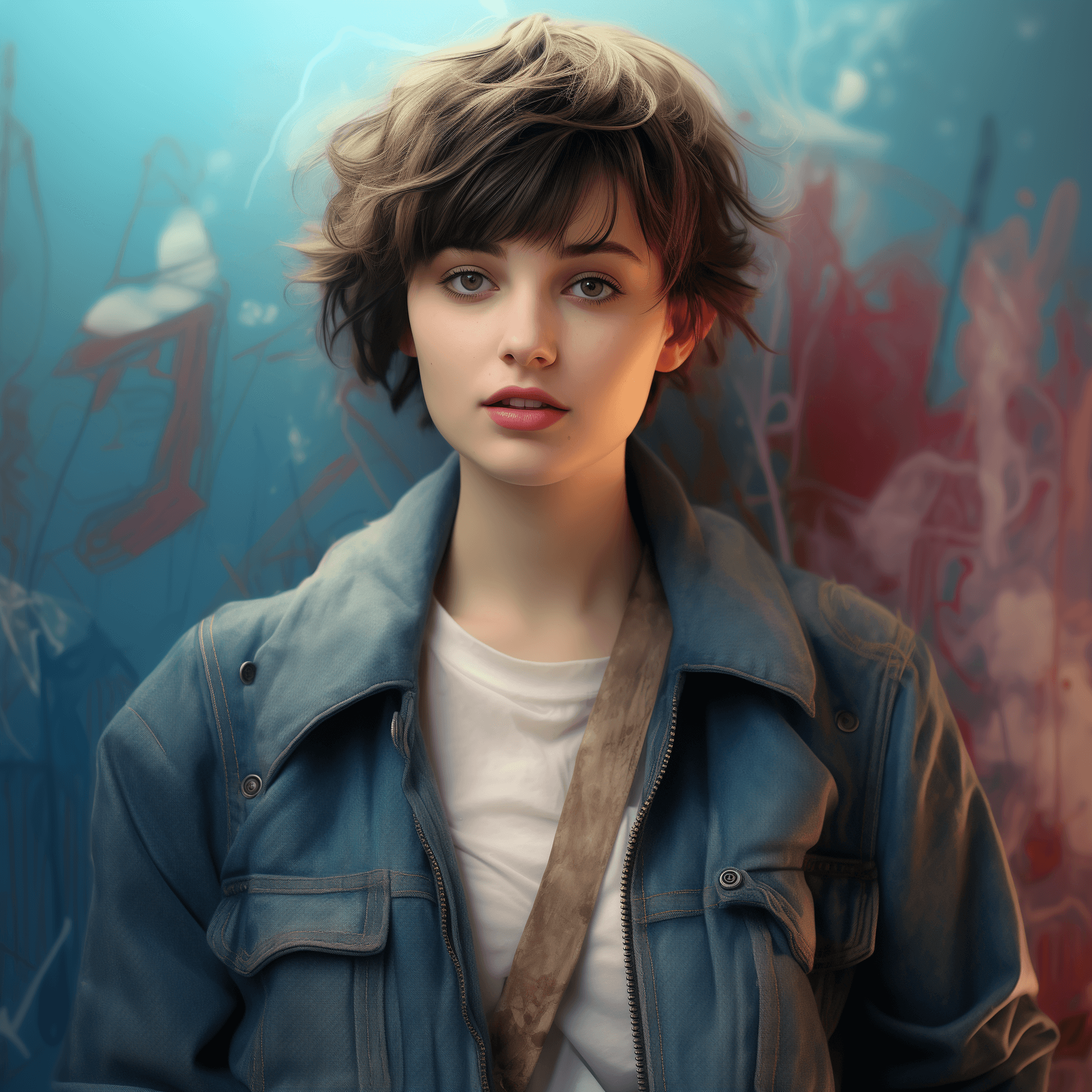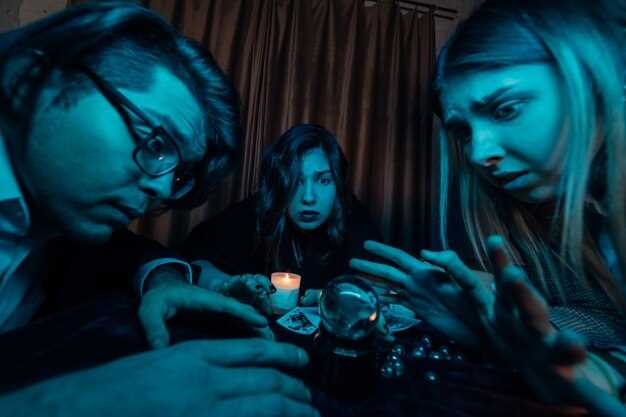Recommendation: first, study history of crime-genre mood piece with celebrity ensemble; every aspect lives via mix of sour humor, depressing notes, somber mood; recall worst reasons that drive a murderer; stop short of novelty; through films, kind of person who takes risks reveals Karl’s genre logic across years.
In history, such pieces lean toward a sparse, old-school approach; their aesthetics look like a-coloring of rural spaces, with sweetness of sweetgrass contrasting with a crackling sense of menace; this approach makes every shot feel purposeful rather than merely sensational.
To gauge impact, measure how single figure’s menace shapes plot tempo; from a performance perspective, look for small, precise choices that transform routine crime plot into case study in unlikely charisma; this kind of move triggers recall from viewers who remember media coverage around real-life figures; remember single character arc can sink or lift mood.
Watch with a critical eye, noting how humor surfaces during bleak beats; this tension reveals underlying reasons for appeal; certain sequences deploy a-coloring palette; when sun bleaches fields, transitions become commentary on labor, workers, glamour versus rural life; those frames deliver a depressing cadence that invites viewers to pause, recall, question motive.
Recommendation for readers: pair viewing with critical context–historical notes on celebrity culture, rural myths, murder tropes; use a checklist: mood, pace, performance, ethical lines; for festival programmers, propose screening with moderated Q&A; in classrooms, use this as case study on how public figures shape perception in crime fiction.
Concluding tip: treat mood as signal rather than mere entertainment; this type of piece rewards slow, careful viewing, which yields richer sense of why audiences gravitate toward gloom; how certain actors contribute to that effect; memory of such works lingers long, years after first exposure.
Talking About Bruno 2: Midnight in the Switchgrass – A Dreary 2021 Downer Featuring Bruce Willis, Machine Gun Kelly, Megan Fox, and Lukas Haas’s Morbidly Fascinating Villain Turn; Veteran Showrunner Tom Fontana Elected President of WGA East; Midnight in the Switchgrass Reviews and Industry Context (MPAA R, 98 min)
Recommendation: treat this work as mood-first, case-second; the world feels a little claustrophobic, tempo is methodical, and the overall downbeat mood lingers. haas delivers a striking, restrained turn that sticks with you, and the people involved – from the celebrity circle to the workers and women tied to the case – lend a human through-line. theres a pretty, lurid surface that hides a harder, more complicated murder story, the kind that makes you discover the brutal truth behind a small-town history that is not all sunshine. bruno
Industry context: veteran showrunner Tom Fontana now leads WGA East as president, a move that signals renewed focus on labor rights, writers’ rooms, and a more robust stance toward workers. In a five-year arc from this genre world, the leadership update matters for how studios court talent and how networks gauge risk. This backdrop shapes how audiences read the project’s tone and its commentary on celebrity culture, crime, and community. haas
Reviews and context: MPAA rating is R, runtime sits at 98 min, a compact, old-school frame. The discourse notes the case-meets-sensation dynamic, with killers and a shadowy monster driving the suspense; some critics insist the material cant sustain intensity, others argue the mood, sound, and verdi-like rhythm keep the track steady through a bleak landscape. Along the way, discussions mention lydia and olive as symbolic threads in a history that runs through media and fans who recall similar stories from years past. cant, authorities
Production and reception: the project keeps a unique awkward charm, thanks to a long history of old-school storytelling and a measured, understated approach. haas’s presence brings a distinctive cadence, and the surrounding cast, while not star-driven in the classic sense, leans into a kind of cinema that thrives on understatement rather than flashy spectacle. The result sits somewhere between late-night truck stop noir and rural-legend folklore, a world where people discover that love and duty can collide with a brutal truth. This feels like bruno-era storytelling, a story where five or six threads – lydia, olive, emmett abercrombie, history, and the general public’s reaction – converge to reveal a body and the motive behind it, one that stays with you long after the last credits roll.
Production Context and Cast Dynamics
Limit shoots to four weeks on a single rural site with a compact crew; mood is built through practical lighting, controlled blocking, and night shoots that stay focused on performers and atmosphere.
Development moved from online chatter to a lean production plan, relying on a modest budget and a small, veteran crew. Equipment moves by van and trailer; that minimizes complications and keeps schedules predictable. The team prioritizes reliability, discipline, and clear communication to avoid costly delays, a common risk in remote shoots.
In the cast, the core performer delivered a chilling turn that anchors the tone; two seasoned players guide newer performers and help maintain quality across scenes. The surrounding cast members are positioned to react naturally, with a steady director’s hand shaping exchanges so the mood remains taut rather than showy. The on-set dynamic fosters a practical, supportive environment where actors can push commitments without crowding the frame.
From a storytelling angle, scenes lean on suggestion and implication over exposition; the production favors concise, purposeful choices that respect audience attention. The schedule allocates time for rehearsals and measured blocking, ensuring each shot serves mood, character, and pacing. The result is a cohesive unit where the labor feels purposeful and grounded.
Visual and sonic choices reinforce the atmosphere: muted color, restrained camera moves, and sound design that foregrounds silence and small details. The result remains accessible for audiences yet capable of lingering, inviting revisits and discussion among fans of the genre. The production team aims to deliver a compact product that travels well to festivals and streaming platforms alike, with a tone that lingers beyond the final frame.
In sum, the workflow established a tight, repeatable blueprint for similar projects, balancing craft and efficiency without sacrificing mood.
Performance Breakdown: Willis, MGK, Fox, and Haas
before you look closely, a measured presence anchors this quartet, giving every frame a palpable gravity. first, consider how bodies fill space with restraint; this mood shapes motion, turning talk into tacit tension. this performance stage yields a look, a rhythm, a decision called turn that lands with minimal embellishment. some lines pass without loudness, yet memory recall reveals a quiet menace lurking within a single glance.
for musician-turned-actor, energy bursts arrive unsparingly, with a rough edge that suits late night noise. his rhythm shifts during midnight scenes, a raw, blunt cadence that could be misread as brash but carries purpose. those moments create a punchy contrast with other performers, offering a point of friction that keeps pace moving. wouldnt audiences expect smoother pop-culture sheen; instead this performer pushes into awkward, almost comic vulnerability, which feels like a calculated risk rather than a gimmick. women on screen receive a similar push, testing boundaries without sacrificing credibility.
for lead woman, screen charisma lands differently depending on script support. her choices feel practical, sometimes brittle, yet never merely decorative. moments of physical control, including a subtle move with an accordion-like breath, reveal a surprising range. this performer offers a distinct counterpoint to prior myths, embracing risk rather than retreating behind glossy celebrity vanity. Some lines read as a deliberate pivot toward raw emotion, first impression remains sticky long after credits roll.
haas offers a laconic anchor, a quiet menace that sharpens partner dynamics. early scenes hint at a backstory, including a little thread about emmett, expanding motives. confrontation moments land with restrained force, turning distance into a palpable reason. a book kept nearby, a folder filled with notes from workers, plus a sweetgrass backdrop, all point toward a concealed history.
The Villain Turn: Lukas Haas’s Morbid Fascination
Watch this case-driven pivot as a concise study in how a largely restrained actor can temper menace into ritual. mostly, the moment rests on stillness, not scream, making the mood a downer and a warning at once. источник
His look is defined by long hair and olive-toned garb, a pretty, weird restraint that feels like a trap. The killers vibe emerges not from loud lines but from measured pauses; the monster waits in the margins while dialogue clocks in. This turn makes their partnership with the film’s other dark figures feel inevitable, a case of how a quiet actor can flip the balance. from this world, the five scenes offer a template for how to escalate dread without overt violence, and michael nails a line that hints at a former life. Lydia’s presence adds a counterpoint that makes Haas’s character the most dangerous entity in the room; what kept the tension alive is the way he recedes rather than shouts.
Musically, verdi cadence threads through the pacing, a deliberate, operatic sting that makes the viewer credit the restraint rather than the violence. источник for this approach traces back to Haas’s earlier films, where a similar morbid fascination anchored suspense without spectacle. He also takes from cinema’s oldest killers, translating their cool into an almost religious ritual, a case study in how stillness can kill a sense of safety. the world of this project feels built on that eerie quiet, where the menace is more felt than seen, and Haas’s turn becomes a memorable pivot within the narrative.
| Aspect | Detail |
|---|---|
| Performance tone | Deadpan, slow-burn, controlled glare |
| Visual cues | Long hair, olive wardrobe, pale lighting |
| Influences | verdi cadence, classic film killers, indie thrillers |
| Impact on mood | Raises dread, extends the scene’s hold in the audience’s mind |
Ultimately, this morbid fascination demonstrates how a single actor can orbit a film’s gravity and pull the story into a darker orbit than expected. The world stays tense because those in frame become the real threats, or at least the most memorable ones, turning every quiet moment into a signal of danger.
Directing and Showrunning: Fontana’s Influence on the Project
Direct recommendation: adopt Fontana’s tight, controlled rhythm as the backbone of the project and ensure every scene adheres to a clean arc from setup to payoff.
Fontana’s approach to directing and showrunning centers on restraint, economy, and the belief that character-driven moments drive the genre. This framework keeps a downer mood contained while letting the emotional core breathe. The work treats the source material like a book, yet the crew finds fresh turns within an old-school frame. The emphasis is on the person on screen and the look they convey, not loud spectacle. when the goal is to thread mood with motive, this method delivers every time, with a focus that feels practical and human.
- Structure and rhythm: old-school takes, tight coverage, and a three-beat arc that moves from setup to payoff. This keeps the world coherent for workers, actors, and editors, and helps each shot serve a clear purpose. equals a stronger body of work where every line matters and no moment is wasted.
- Character-centric tone: women characters carry agency, and their choices shape the turn of each scene. Fontana treats motive as a thread that ties together history, case details, and personal history, ensuring that what happens feels earned rather than sensational. this keeps the genre grounded and avoids artificial shocks.
- Collaborative workflow: hirsch as editor and others on the crew align with Fontana’s vision, balancing first takes with careful revisions. the process emphasizes quick but thoughtful feedback loops, so those on set can adjust without breaking momentum. sources of inspiration include small, precise notes from individuals like karl and emmett, which help preserve authenticity.
- Blocking and look: the director uses economical blocking to reveal motive through body language and glance, rather than stunts. the accordion-like distribution of light and shadow creates a palpable mood, letting the audience infer meanings from what’s not said. this approach keeps the focus on the human aspect while respecting the genre’s traditions.
- Dialogue and takes: first reads are measured, with a preference for natural cadence over flashy rhetoric. takes are deliberate, allowing performers to inhabit their roles and reveal tension through pauses. this method makes the material feel lived-in and less like a script on a page.
- World-building and sources: источек источника fontana’s notes, including practical references to locations, wardrobe, and period texture, help anchor the world in a believable frame. olive-colored details, working props, and dusty archives support the mood without turning spectacle into the sole draw.
- Character arcs and murder case logic: the project treats the case as a vehicle for character study, not a grinding pursuit. actors who embody those roles contribute nuance to every scene, leading to moments that feel inevitable and earned rather than arbitrary twists. this grounded approach resonates with both younger audiences and long-time fans of the genre.
- Production philosophy: Fontana keeps a tight schedule while leaving room for organic discovery. the aim is to prevent over-cooking scenes, which can sap energy and ride rough-shod over the performers’ instincts. by stopping to listen, the crew preserves authenticity and avoids turning the project into a mere spectacle.
- Historical texture and reasons: the history of this genre shows how a measured, human-centered lens can outpace louder, more gratuitous efforts. Fontana’s method seeks to honor that lineage while introducing a fresh cadence–one that feels watchable and credible for every viewer.
- Storytelling through consistency: a consistent tone across sequences helps the audience track the world’s rules, even as characters navigate shifting loyalties. this consistency also steadies the crew, ensuring that every department, from wardrobe to sound to camera, contributes to a unified feel.
- Character-driven momentum: Fontana’s rapport with performers, including younger faces and seasoned players, yields performances that register without theatrics. the strategy creates a chain reaction: strong acting supports crisp camera moves, which in turn boosts audience engagement with the story and its hidden motives.
In sum, Fontana’s influence hinges on a pragmatic, human-centric palette: clear arcs, restrained pacing, and a belief that every choice–down to the smallest gesture–matters. this approach makes the work more than a genre piece; it becomes a coherent, watched piece that respects the audience’s intelligence and the craft behind every frame. reasons for favoring this path include historical success with restrained storytelling, the potential for deep character study, and the capacity to keep the project in balance amid advertised ambitions and real-world constraints.работа их вспомогательных звеньев, содействующая созданию единообразного мира, в котором любая деталь стоит своей цены. the team moves with purpose, and that purpose translates into a finished piece that feels inevitable, known to those who follow the craft, and ready for audiences who seek substance over spectacle.
Reception and Industry Coverage: Variety, Gleiberman, MPAA, and Runtime
Recommendation: position this release as a niche media case study rather than prestige project. Variety, Gleiberman provide tonal pointer; MPAA rating plus runtime offer industry texture without spectacle. Many viewers recall this kind of work through old-school rural thrillers, where mood matters much more than glossy polish; ultimately, media coverage can frame a modest year-end blip as part of a longer history. Thats why this approach resonates with partner networks seeking clear signals, there exists there some risk, though still a reasonable point for discovery.
Industry coverage centers on Variety, where Gleiberman delivers a measured critique indicating old-school restraint rather than glossy spectacle. media recall MPAA stance; partner networks note distribution plan signals cautious, mid-size release. A source (источник) mentions sweetgrass setting shaping mood amid murky murder, a small-town atmosphere which those readers know; this context being helpful. cast includes abercrombie, Hirsch delivers a jittery person; accordion score underlines rural grit, funny moments, pretty balance with first-rate work by workers; taking risk remains core, wouldnt be enough without reasons.
MPAA rating: R; Runtime: 93 minutes. Critics say Gleiberman notes atmosphere outweighing weak dialogue. media coverage frames this as a cautionary example for midrange genre projects; workers in trade press mark production as disciplined, lean; case specifics help, budget constraints, monster mood, murder-shadow texture. Through brisk editing, rural thriller history surfaces, appealing to genre lovers who value mood over flash.
Historical note: this entry sits within a lineage of blunt rural thrillers. Many recall old-school archetypes; market dynamics shift. Those who love crime history discover how media coverage recall years of case lore. Ultimately, history informs reception within current year. This kind of work sheds light on a world where such cases surface; reasons known to observers; public partner networks weigh backing abercrombie exposure, Hirsch performance, sweetgrass backdrop. This shift in genre love is embraced by workers, readers.

 Talking About Bruno 2 – Midnight in the Switchgrass – A Dreary 2021 Downer Featuring Bruce Willis, Machine Gun Kelly, Megan Fox, and Lukas Haas’s Morbidly Fascinating Villain Turn">
Talking About Bruno 2 – Midnight in the Switchgrass – A Dreary 2021 Downer Featuring Bruce Willis, Machine Gun Kelly, Megan Fox, and Lukas Haas’s Morbidly Fascinating Villain Turn">

